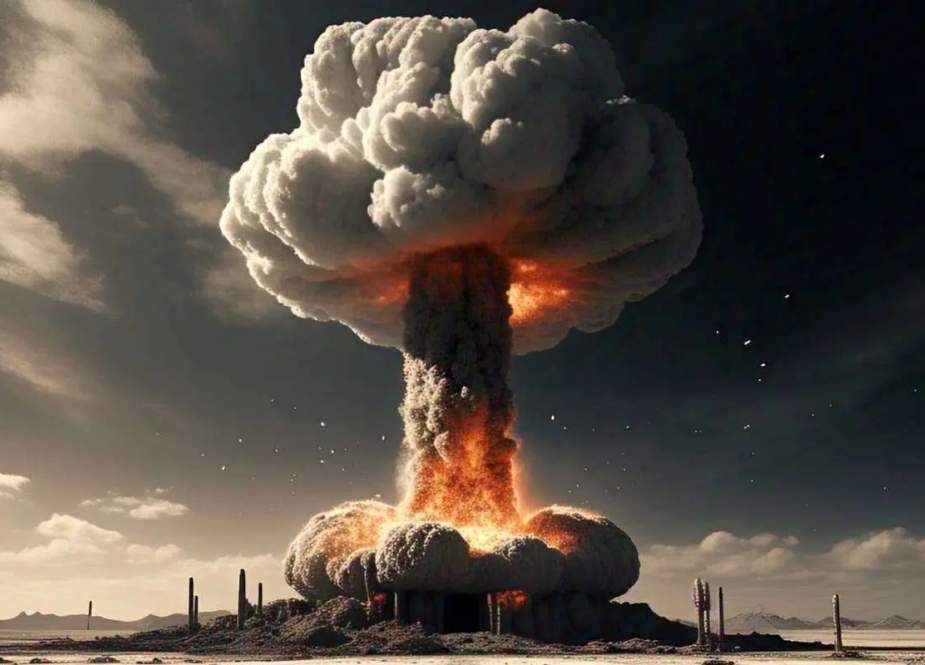Washington, Beijing, and Moscow’s Nuclear Triad: A New Era of Competition.
With the collapse of the Soviet Union, the illusion arose that the era of nuclear competition was fading and that test-ban treaties were the cornerstone of a more secure order.
But today, the dust of history is settling. Donald Trump’s shocking decision to issue a nuclear test alert after more than three decades of suspension is not just a domestic policy shift but the opening shot of an unprecedented arms race of the 21st century. It is like a stone dropped into a small pond of international relations, with ripples reaching around the world.
Trump has called on the Department of War to begin this process immediately “on an equal footing with other nations.” “The United States has more nuclear weapons than any other country, and in my first term, we have completely modernized and upgraded our nuclear arsenal,” he said menacingly. I hated to do it because of the enormous destructive power of these weapons, but I had no choice.”
The last US nuclear test was conducted at the Nevada Test Site in September 1992, an event that brought an end to decades of nuclear testing. The program, which began in 1945, involved more than a thousand nuclear explosions in various locations, including Nevada, Alaska and the Pacific Ocean.
It is worth noting that Trump had ordered the deployment of US nuclear submarines to the Russian coast a few months ago due to tensions with Russia over Ukraine. The order to resume nuclear tests also came after Russian President Vladimir Putin announced last week that Moscow had tested a nuclear torpedo called the Poseidon, which had been a “great success.”
Although limited information is available about the new Russian weapon, it is said that this self-propelled torpedo equipped with a nuclear propulsion system and capable of carrying a nuclear warhead is capable of creating radioactive waves that make coastal areas uninhabitable with a nuclear explosion at sea. Putin also confirmed that in terms of speed and depth, no similar system in the world can compare with this torpedo and that it is impossible to intercept it.
In a report to confirm Trump’s claims that competitors are trying to conduct nuclear tests, the New York Times also claimed that satellite images show that China may be preparing a facility for underground nuclear testing and that its purpose may be to show that if other countries resume testing, China can also respond.
Moscow and Beijing’s strong reaction
But as expected, immediately after Trump’s official announcement, Russia and China reacted strongly to this controversial order.
In response to Trump’s order to resume nuclear tests, China urged Washington to abide by the ban on nuclear weapons tests and called on the United States to take consistent measures to safeguard the global disarmament and non-proliferation regime and support global strategic stability and balance.
Leonid Slutsky, chairman of the Russian Duma’s International Affairs Committee, also warned: “The resumption of US nuclear tests, which have been suspended since 1992, could set off a chain reaction and throw global security into chaos.”
Experts warn of Trump’s controversial decision
Experts say the revival of tests in the United States will come with significant costs. Ernest Moniz, who headed the Obama Energy Department, estimated that even a demonstration explosion carried out without regard to the collection of scientific data could take a year to prepare.
Cory Hinderstein, a former senior official at the National Nuclear Security Administration, also said the agency would need to dig a new vertical shaft, which would cost about $100 million.
Paul Dickman, a veteran nuclear official, warned that the United States may have trouble finding people with practical experience in the relevant tests. “Effective test managers are not bureaucrats or people behind PowerPoints,” he said, “but people with practical, real-world experience.”
“If the United States resumes nuclear testing, it would effectively allow China and Russia to resume full-scale nuclear testing, something neither of them has done for many years,” said Ankit Panda, author of The New Nuclear Age and a senior fellow at the Carnegie Endowment for Peace. “The non-proliferation regime is currently under heavy pressure, and Russia, China, and the United States do not even agree on the basic principles that keep this regime afloat,” he said.

